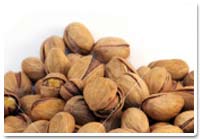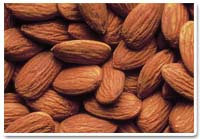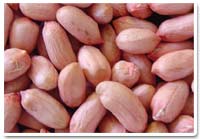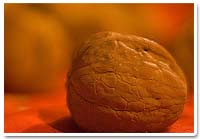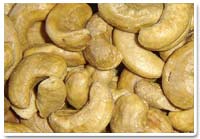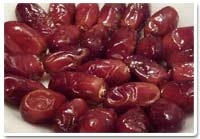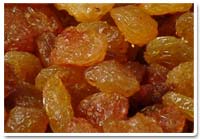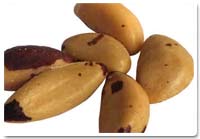Chest Nut
An Introduction
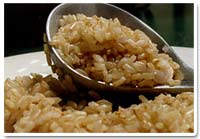
Until the introduction of the potato, the chestnut was a major source of complex carbohydrate in Europe. Alexander the Great and the Romans planted chestnuts as they travelled across Europe on their various campaigns. In fact legend has it that the Greek army survived on their stores of chestnuts during their retreat from Asia Minor in 401-399 B.C.
What are Chestnuts?
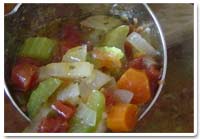
In Europe, Asia and Africa, chestnuts are often used as an everyday potato substitute. Although they are wonderful straight from the oven or fireplace, one can make use of the winter chestnut crop in many ways, both sweet and savory.
Mount Olympus, home of the gods, was said to have had an abundance of chestnut trees producing this sweet, edible nut. It is also called sardian nut or jupiter’s nut or husked nut or spanish chestnut.
Chestnuts are classed as temperate nuts and are most suited to deep well-drained soils. They need cold winter temperatures and warm to hot summers. They are a unique fresh product more like a fruit than a nut.
Etymological Background
While there is another opinion according to which the word chestnut may have originated from the Greek name of Sardis glans (Sardis acorn) – Sardis being the capital of Lydia, Asia Minor, wherefrom the fruit had spread.
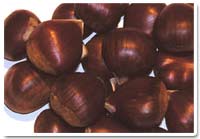
The tree was known by the same/identical name in all most all the ancient languages of Central Europe: in Breton “Kistinen” for the tree, and “Kistin” for its fruit, in Welsh “Castan-wydden” and “Sataen”, and many others close to the French “châtaigne” and to the Latin name chosen for the genus.
Biblical Reference
Storage of Chestnut
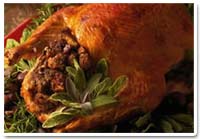
We recommend storing the nuts in perforated plastic bags, or solid plastic bags that you’ve put some holes in. Place a damp paper towel in with them.
Serving Tips
Chestnuts roasting on an open fire…Traditional fresh chestnuts. Everyone loves that delicious taste and unforgettable smell of fresh roasting chestnuts. Traditionally, chestnuts are roasted over an open fire or in the oven (slit first and roasted on medium heat for 25-30 minutes, turning over after 15 minutes). They may also be cooked in the microwave, sandwich maker, hot plate or frying pan. They make an excellent stuffing for turkey, also roast pheasant, which is one of the few forms in which they are eaten often.
Their distinctive flavour and texture can give a unique taste to a range of dishes from starters to sweets. Chestnut soup is a winter classic and other equally delicious options are stir fries, casseroles, stuffings for meat and poultry, pastas, cakes and desserts. They can also be dried and ground into high quality flour for making gluten free bread, biscuits, or gravy.
Chestnut Bisque
- 3 tbsp. butter
- 1 stalk celery
- 1 medium carrot
- 1 medium onion
- 1/4 C parsley, chopped
- 14g Carbohydrate, 3g Fiber, 17g Fat, 3.5g Sat. Fat, 0g Trans Fat, 10mg Cholesterol,
- 380mg Sodium.
- 1/4 tsp ground cloves
- 1 bay leaf (to be removed later)
- 6 C chicken broth
- 12 oz. cooked, peeled chestnuts
- (1 lb fresh in the shell)
- 1/4 C heavy cream
- 1/4 tsp pepper
- Salt to taste
Melt the butter in a large saucepan over medium heat. Add carrots, onion, and celery, and saute until soft, about 7 minutes. Add chestnuts and continue cooking 5 minutes, stirring occasionally.
Add stock and bring to a boil. Reduce heat to simmer and add apple juice, parsley, nutmeg, salt and pepper. Simmer 15 minutes. Add tarragon and continue cooking 5 minutes. Puree the soup in a blender. Return to saucepan and reheat. Adjust seasonings as needed. Serve with a dollop of yogurt or sour cream.
Cream Of Chestnut Soup
Here’s a variation on the Chestnut Bisque that’s at least as good and some say better.
It’s creamy smooth and has a delightful taste
- 1 medium carrot, diced
- 1/2 onion, chopped
- 1 stalk celery, chopped
- 1 tbsp. butter or canola oil
- 1 lb fresh chestnuts, peeled
- 3 C chicken bouillon
- 1/4 C apple juice
- 1/4 C fresh parsley, chopped
- pinch ground nutmeg
- 1/4 tsp salt
- fresh ground pepper to taste
- 1/2 tsp dried tarragon
- nonfat sour cream or yogur
Cut the celery, carrot and onion into small pieces and process in a food processor. Melt the butter in a 3 qt. saucepan. Add the celery, carrot and onion. Sauté about 10 minutes. Add the chestnuts, broth, parsley, cloves and bay leaf to the veggies. Bring to a boil; then simmer for 30-45 minutes covered. Puree the soup in small quantities in a blender and put into another pan. Stir in the cream, salt and pepper and reheat over medium heat until warm. You may want to garnish with a bit of parsley.






